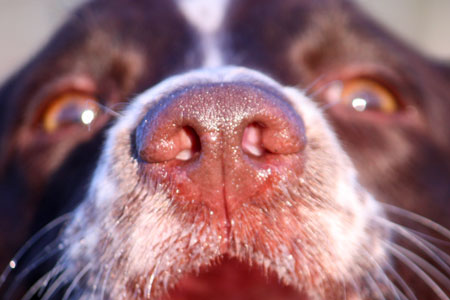A newly developed digital sensor will make it quick and easy to detect bombs, explosives and drugs at airports and in customs areas.
In less than three years, it is almost certain that the police and emergency services will have access to a ground-breaking tool to help them combat terrorism, drug smuggling and other criminal activities. Using a newly developed artificial ‘dog’s nose’, they will have the capacity to reveal bombs, explosives and chemical substances that can be used in the commission of crime and which are hidden in containers, hand luggage and suitcases.
The ‘dog’s nose’ consists of a system of digital sensors which, using almost real-time information, can detect fumes and residues of illegal substances that may be hidden in containers of passengers’ luggage when they check in at airports. The system is inexpensive to operate, quick to identify suspicious fumes, and user-friendly.
The project was launched on 1 January this year, and a prototype was recently tested.

Fast, flexible equipment
“There is a huge need to develop fast, flexible equipment to identify drugs and explosives. The authorities use means such as x-ray scanners, screening and sniffer dogs today. In principle, ‘The Nose’ can do the same work as the dogs. However, it is much more reliable and it can be ‘trained’ to track down anything from money to foods. This makes the machine unique,” relates Jens Kristian Munk, Postdoc at DTU Nanotech.
Wireless connection
“The ‘Nose’ functions by taking air samples from luggage or containers. Chemicals located in the sensor chamber react to fumes or traces of illegal substances. A wireless connection is then used to transfer images from the air samples to a computer in a different location. The computer analyses the changes in colour and provides an answer—green or red—according to whether or not the police or customs officials should take a closer look at the suspect item,” relates Jens Kristian Munk.
The concept originally comes from the United States, and has been refined and developed by Associate Professor Mogens Havsteen Jakobsen from DTU Nanotech.
DTU Nanotech is developing the chip and the chamber through which the air is filtered. DTU Compute is developing the software that analyses the images.
Article in DTUavisen no. 9, November 2014.